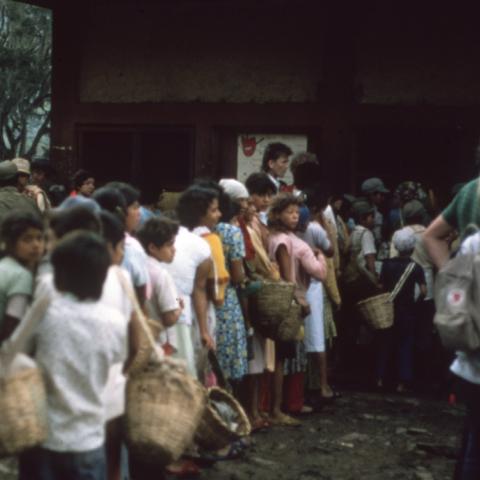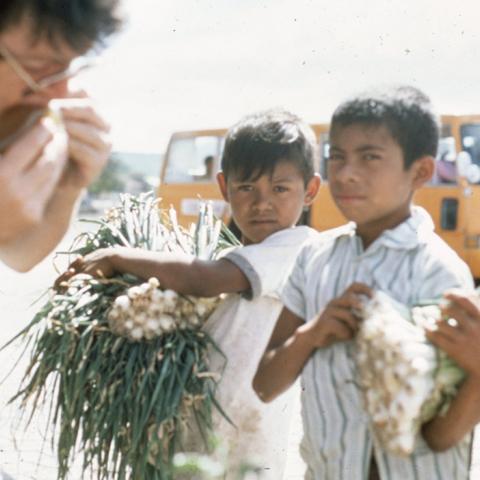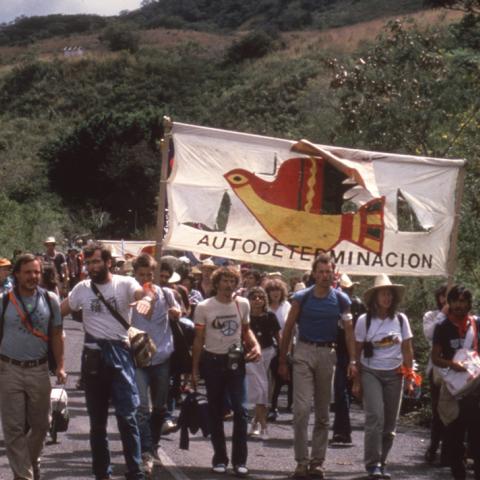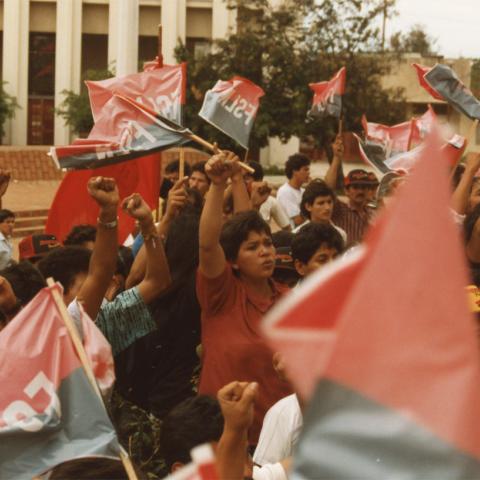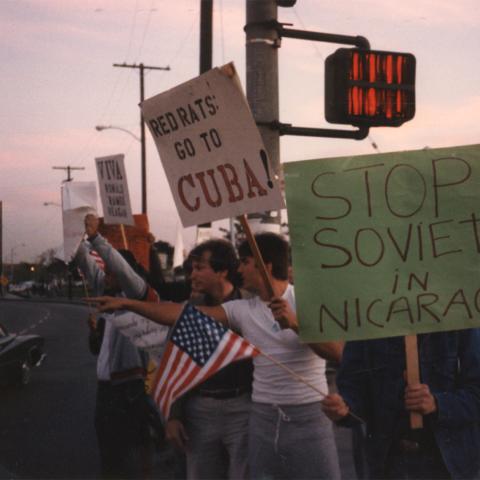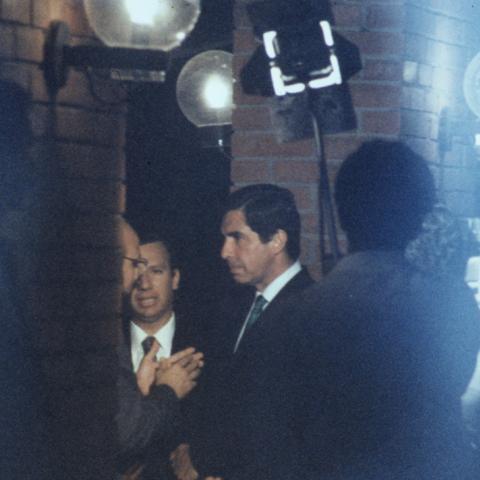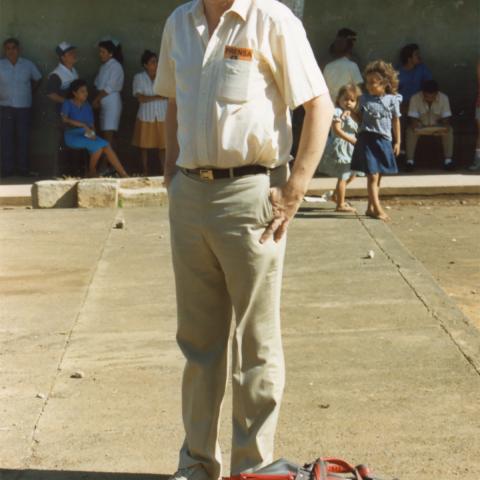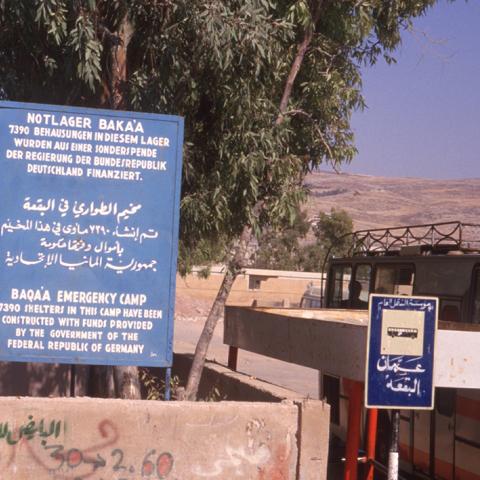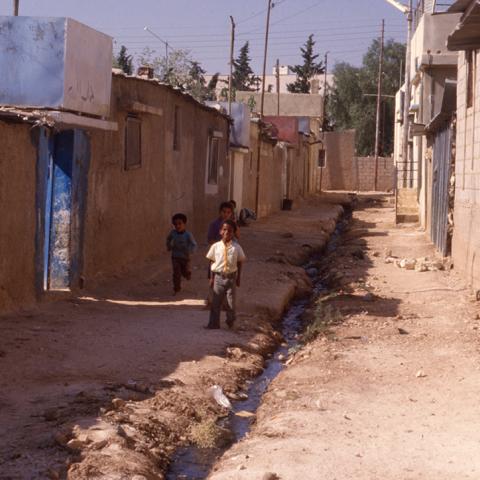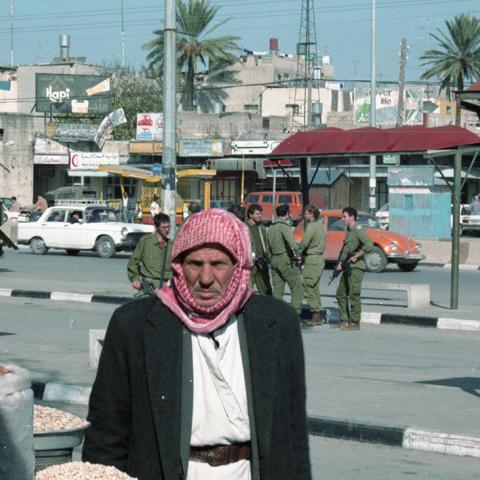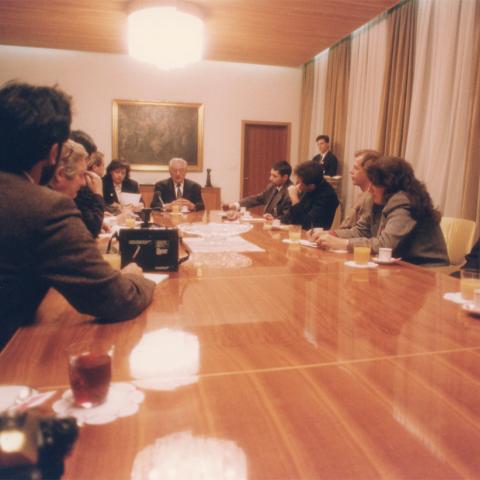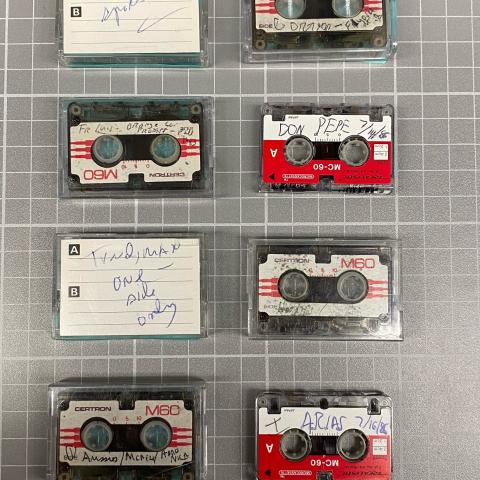The Journalist’s Log: The Mike Emery Collection
by Alohie Tadesse, Digital Collections Specialist, CSUN - October 08, 2024
Michael “Mike” Emery was an author, freelance journalist and professor, who taught journalism at California State University, Northridge for over three decades. Emery’s research for his stories and publications were donated to the Tom & Ethel Bradley Center. 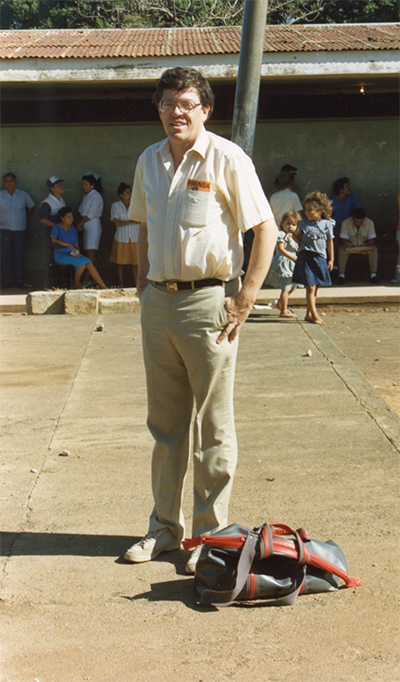 The collection includes photographs, color positive slide prints, audiocassettes, mini-cassettes, VHS tapes, both local and international newspapers, personal and professional papers, and research notes. The Mike Emery Collection in Special Collections & Archives gives Dr. Emery’s publications a personal and evidentiary dimension, as they document the faces and voices of the people whose stories he told in his editorials.
The collection includes photographs, color positive slide prints, audiocassettes, mini-cassettes, VHS tapes, both local and international newspapers, personal and professional papers, and research notes. The Mike Emery Collection in Special Collections & Archives gives Dr. Emery’s publications a personal and evidentiary dimension, as they document the faces and voices of the people whose stories he told in his editorials.
One of Emery’s deepest values as a journalist was a commitment to documenting and reporting the truth, even when exceptionally unpopular and risky to do so. Far from an armchair journalist, Emery made several trips to Central America from 1986 to 1988. This included a 10-day trip to Nicaragua, during the height of the ruling party’s, Sandinista National Liberation Front (FSLN), conflict with the right-wing rebel group, the Contras. There, Emery traveled to Nicaragua Libré, a small rural community and tourism project supportive of the Sandinistas that sought to create friendly ties with Americans and other Westerners. Emery documented this trip extensively – with photographs and audio and video recordings of the community, FSLN troops, and their farms. He was even granted an interview with Nicaraguan President, Daniel Ortega, of which he recorded on a portable microcassette recorder. After a 1985 trip, he shared his findings with CSUN students and professors, emphasizing how American press coverage of the war in Nicaragua has been intentionally skewed to obscure U.S. involvement in backing the Contras.
Later that year, Emery returned to Central America to cover and participate in the International March for Peace in Central America, which called for the deterring of U.S. military intervention in Central America, supporting peace negotiations initiated by Latin American leaders, and stressing Nicaragua’s right to self-determination. The collection includes vibrant color slides from the march, beginning in Panama and ending in Mexico, that depict street life in several Central American countries, buildings, monuments, and political demonstrations. Upon return, Emery reported to the Daily Sundial that peaceful marchers were met with hostilities from soldiers and border guards in Costa Rica and Honduras, and expressed his frustrations that the march had been largely ignored by the US media. While in Costa Rica, Emery interviewed the Costa Rican president and Nobel Peace Prize laureate, Oscar Arias. He recorded it on both audiocassette and VHS tape.
 Shortly after his reporting in Central America, Emery would turn his attentions to the Middle East, traveling to Jordan, Israel and Palestine - from the years 1987 to 1991. On these trips, Emery recorded his thoughts, observations, experiences, and interviews with Israeli scholars, politicians, aid workers, local journalists, and Palestinian refugees on a portable cassette player. In 1990, Emery wrote an exposé on the massacre of Palestinian worshippers at al-Aqsa mosque in Eastern Jerusalem by Israeli Border Police. He interviewed witnesses of the event and compiled videotape evidence that disproved the Israeli government and the New York Times retelling of the event. When the New York Times refused to correct their published report, Emery prepared a detailed article, "The Temple Mount Massacre," which appeared in the Nov. 13, 1990 Village Voice. Audiocassette recordings of interviews with hospital workers from the nearby al-Makassed Hospital who treated the injured worshippers are a part of the collection.
Shortly after his reporting in Central America, Emery would turn his attentions to the Middle East, traveling to Jordan, Israel and Palestine - from the years 1987 to 1991. On these trips, Emery recorded his thoughts, observations, experiences, and interviews with Israeli scholars, politicians, aid workers, local journalists, and Palestinian refugees on a portable cassette player. In 1990, Emery wrote an exposé on the massacre of Palestinian worshippers at al-Aqsa mosque in Eastern Jerusalem by Israeli Border Police. He interviewed witnesses of the event and compiled videotape evidence that disproved the Israeli government and the New York Times retelling of the event. When the New York Times refused to correct their published report, Emery prepared a detailed article, "The Temple Mount Massacre," which appeared in the Nov. 13, 1990 Village Voice. Audiocassette recordings of interviews with hospital workers from the nearby al-Makassed Hospital who treated the injured worshippers are a part of the collection.
In 1991, Emery was granted permission to interview the Jordanian leader, King Hussein and recorded the interview on audio tape, that has recently been digitized and made available to researchers. The interview was used as the basis for his award-winning article, entitled “The War That Didn’t Have to Happen: How U.S. Scuttled the Arab Peace Plan,” that appeared in Village Voice and Los Angeles Times.
Other highlights from the collection, include photographs from the former Yugoslavia during its civil war and press conference interviews from the Croatian leader, General Tudjman and Serbian president, Slobodan Miloševic.
After consistent high-profile international assignments, Dr. Emery passed in 1996 in his Woodland Hills home from prostate cancer. He is survived by his wife Lulu Calnan, a Palestinian-American, and their three children and three stepchildren.
Image Gallery
Post tagged as: bradley center, archives, photographs, audiovisual materials
Read more Peek in the Stacks blog entries
